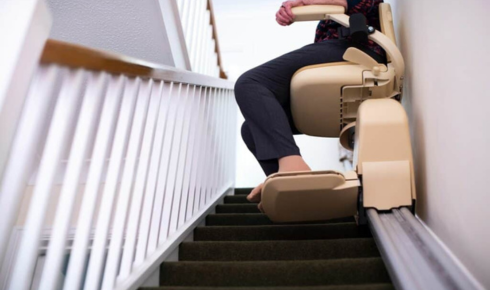Growing older doesn’t mean giving up the comfort of your home. In fact, more and more people are choosing to age in place — staying in the house they love, surrounded by memories, rather than moving into assisted living. But here’s the catch: as time goes on, daily activities can get tricky if your home isn’t designed for accessibility and safety. That’s where thoughtful upgrades are recommended!
Aging-in-Place & Accessibility Upgrades Tip nr 1: Create one‐level living (or easy floor connection)
Make sure the main living functions (bedroom, bathroom, kitchen) are accessible without needing lots of stairs. Wherever possible, keep everything on a single level, or install a convenient stair alternative. This lets someone age in place without being hindered by stairs or split‐levels.
Aging-in-Place & Accessibility Upgrades Tip nr 2: Widen doorways, hallways & reduce thresholds
Doorways of at least ~36 inches (≈ 91 cm) and hallways wide enough for a walker or wheelchair are key. Also minimize or eliminate high thresholds between rooms to prevent tripping and improve movement. This upgrade boosts long-term accessibility.
Aging-in-Place & Accessibility Upgrades Tip nr 3: Design bathrooms for safe and independent use
Bathrooms are high‐risk zones. Important upgrades include: curbless (no-step) showers, grab bars near the toilet/shower, handheld showerheads, non‐slip flooring, and sufficient maneuvering space. These changes significantly increase safety and comfort
Aging-in-Place & Accessibility Upgrades Tip nr 4: Select fixtures, hardware & controls for ease of use
Choose lever‐style door handles and faucets (instead of knobs), controls at accessible heights, lighting that’s bright and consistent, and appliances positioned to minimize bending or reaching. These details make daily living easier as mobility or strength change.
Aging-in-Place & Accessibility Upgrades Tip nr 5 : Ensure good lighting and floor surfaces
Older eyes need more light, and slick or variable flooring can be a major hazard. Use bright, glare‐controlled lighting, motion sensors where helpful, and choose flooring that is level, has low risk of tripping, and provides good traction. These features help prevent falls.
Aging-in-Place & Accessibility Upgrades Tip nr 6: Plan for future adaptability (“future‐proofing”)
Even if heavy modifications aren’t needed now, build in the possibility: e.g., rough‐in plumbing for a future downstairs bath, reserve space for a potential elevator or stair lift, include extra wall blocking for future grab bars. This kind of foresight means you can age in place more comfortably and economically.
Aging gracefully doesn’t have to mean leaving the home you cherish. With the right upgrades, your house can easily grow with you — adapting to your changing needs without sacrificing style or convenience. Sheiner Construction’s six practical tips prove that accessibility can blend perfect with comfort and design.
From improved lighting and safer bathrooms to wider pathways and thoughtful layouts, each change is an investment in your safety, independence, and happiness. The key is to start early — plan ahead, think about how your lifestyle might change, and make adjustments before they’re absolutely necessary. Because when it comes to aging in place, the best time to prepare for tomorrow is today.
Conclusion
Aging gracefully doesn’t have to mean leaving the home you cherish. With the right upgrades, your house can easily grow with you — adapting to your changing needs without sacrificing style or convenience. Sheiner Construction’s six practical tips prove that accessibility can blend seamlessly with comfort and design.
From improved lighting and safer bathrooms to wider pathways and thoughtful layouts, each change is an investment in your safety, independence, and happiness. The key is to start early — plan ahead, think about how your lifestyle might change, and make adjustments before they’re absolutely necessary. Because when it comes to aging in place, the best time to prepare for tomorrow is today.


